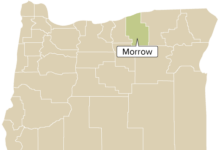There was a total of 2,156 MWh of new energy storage systems brought online in Q4 2020 – this was an increase of 182% from Q3 2020, making Q4 the new record quarter for U.S. storage, according to Wood Mackenzie and the U.S. Energy Storage Association’s (ESA) latest U.S. Energy Storage Monitor report.
As prices fall and barriers to storage deployment are eroded, front-of-the-meter (FTM) storage is taking off in the U.S. Four out of every five MW deployed in Q4 were FTM storage. The segment contributed 529 MW out of the total 651 MW of storage deployed in Q4. California touted a majority of Q4 FTM deployments, according to the report.
At 90.1 MW deployed, residential storage projects made up 14% of the MW total for Q4. After gradual growth in deployments over the first three quarters of 2020, Q4 saw a notable residential spike, driven in large part by homeowner interest in California. Massachusetts led the non-residential segment in Q4, which is growing more slowly than the other two U.S. storage segments.
In 2020, overall, 1,464 MW/3,487 MWh of new storage came online in the U.S. – 179% more storage was added in 2020 than in 2019 in MW terms. The U.S. storage market will add five times more MW of storage in 2025 than was added in 2020, with FTM storage continuing to contribute between 75-85% of new MW each year.
“2020 is the first year that advanced energy storage deployments surpassed gigawatt-scale – a tremendous milestone on the path to our aspiration of 100 GW by 2030,” says Jason Burwen, interim CEO of the ESA. “With continuing storage cost declines, energy storage is on an accelerating trajectory to enable a resilient, decarbonized and affordable electric grid for all.”
Q4 was the most eye-catching quarter to date for the residential market. California contributed most residential storage deployments in 2020 and Hawaii was also a very active market, while states in the Northeast, the Midwest, the mid-Atlantic and the Southeast are forecast to see growth over the next few years.





The interest and demand for batteries will continue to increase in the coming decades. And as the technology and accessibility continue to improve, batteries will only become more and more integrated into our power networks